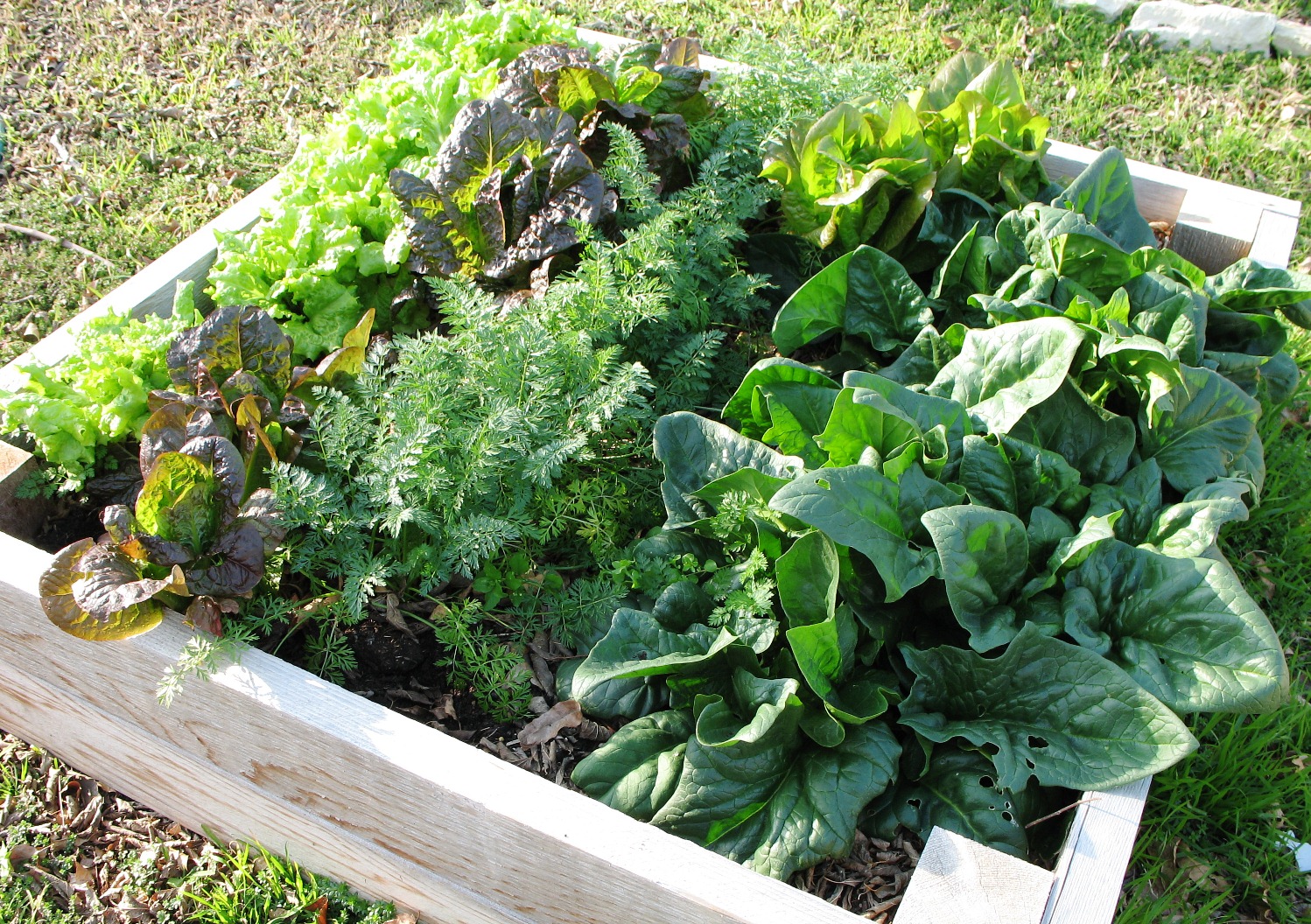I Feel a Salad Coming On…
If you’re new to vegetable gardening in Texas, you might not realize how productive our fall and winter gardens can be. With cooler temperatures and more abundant rainfall, overall garden maintenance is much easier. You can grow an abundance of vegetables this time of year including salad greens, chard, beets, turnips, radishes, carrots and do so all the way through spring. Better yet, you can grow all of the cole crops, such as broccoli, cabbage, cauliflower, Brussels sprouts kale, collards and kohlrabi with great ease.

Cole crops do just fine in our heavy clay soil and will do even better in raised beds. They tend to have shallow root systems and don’t require very rich soil. All belong to the Mustard family, and have similar cultural requirements. Cabbage can withstand frost down to about 15- 20 F. Cauliflower and chard are more sensitive to cold than some of their other relatives. However, the closer you are to harvest time, the more sensitive some of these plants may be to the cold. You should cover plants with frost cloth during a hard freeze.
Starting in mid-September, you can plant two or three successions of these crops at two weeks apart for harvesting through early December. Collards, kale, kohlrabi, mustard, and turnips, which mature quickly, can be directly seeded into the garden through mid-October. Or, you can purchase transplants of these crops at your local garden center. For spring harvest of all these crops, you can start seeds again in early January for transplant into the garden mid-February, or purchase transplants in February.
According to my husband, broccoli is the best of all the vegetables. So as you might guess, we grow a lot of broccoli. I always let a few broccoli plants go to flower, as they are absolutely beautiful and attract bees to your garden just in time to pollinate your fruit trees and spring planted squash and tomato plants.
Salad greens are easy to start from seed directly in the garden September through October. Seed several successions and you’ll have greens through next spring. Lettuce seeds require light to germinate so sprinkle seeds on top of the soil and press down lightly. Keep the soil surface evenly moist for about a week and you should see germination. By harvesting leaves continuously from your lettuce plants, rather than harvesting the entire head at once; you can have continual harvest through the winter.
Amend your vegetable beds with compost each season. If drainage is a problem, work expanded shale into the soil as well. A full sun location is best but these cool-season crops can all tolerate a bit of shade, especially in the afternoon. You can also grow any of these crops in containers if you have limited garden space. Add a vegetable fertilizer to the soil at planting time, then apply a side dressing of fertilizer three to four weeks after planting and then again three to four weeks later. Liquid seaweed is also a good foliar feed and soil drench for cole crops. Keep plants watered regularly, but don’t let the soil get soggy.
The main pests you’ll encounter with cole crops and greens are the cabbage looper and cabbage worm, as well as a few aphids here and there. Keep an eye out in the garden for those pretty little yellow butterflies skipping about your broccoli plants. They will lay eggs of larvae that can chew through a crop in quick order. Bti, or Thuricide, is a natural product that can be applied to vegetable crops to control caterpillars. You can also pick the young caterpillars off the plants. You may experience several generations of caterpillars so treating every two weeks after the first sign of pests will help control the problem. Aphids can usually be dispatched with a strong water blast or application of insecticidal soap.
There’s nothing like being able to harvest your own fresh vegetables from the garden, especially during the winter months. All of these veggies taste much better fresh from the garden, especially the cole crops. You might even be able to convert a Brussels sprout hater…or two.


